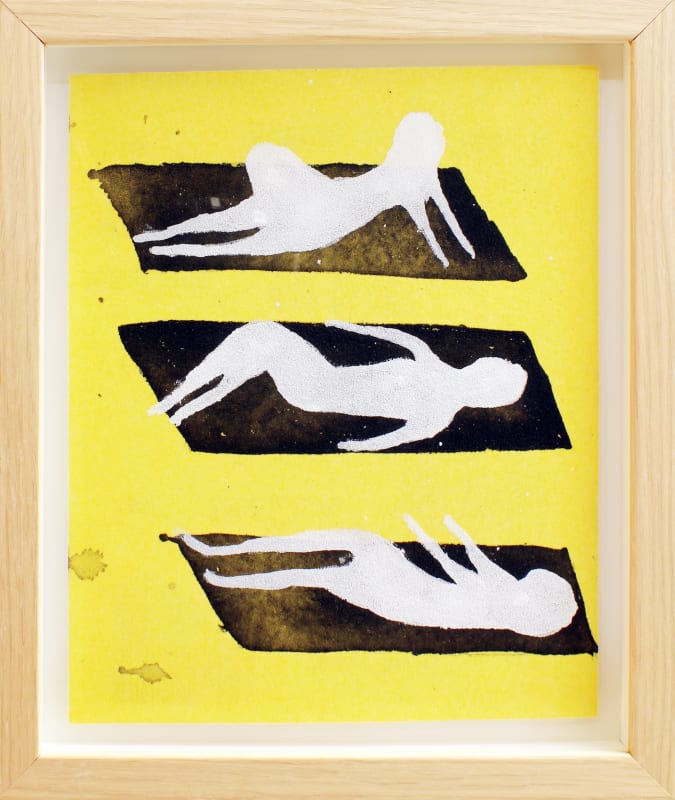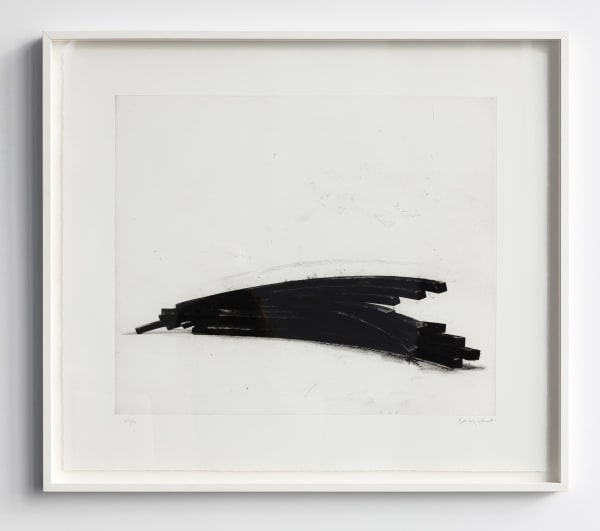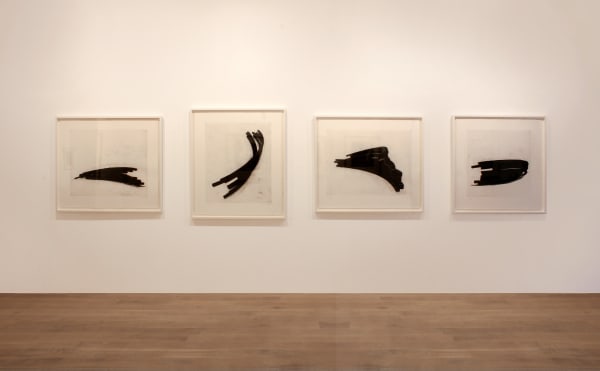Happy Medium: Group Exhibition
Happy Medium is a curated exhibition of works on paper by four artists. For the artists in this exhibition: Richard Lewer, Bernar Venet, Pablo Picasso and Max Gimblett; this medium presents different possibilities to their primary artistic practices.
Drawing is a vital part of Richard Lewer's (b. 1970, NZ) practice. These new works are politically and culturally engaged with a sense of slapstick humour. Crudely drawn on sandpaper Lewer highlights society's obsession with food trends - in one work a drumstick is illustrated with the text "organic chicken", another reads "super foods". He jibes at the art world with "what do Art Dealers really do" and "I wish I wasn't a poor artist". Other works are more sombre, "I wonder how many people will be at my funeral" and "my girlfriend is hard work". Together, the works are an outpouring, a stream of consciousness from a social realist who is able to comment on themes often left unspoken.
Bernar Venet (b. 1941, FR) is a leading contemporary sculptor, known internationally for his large-scale conceptual works with a minimalist aesthetic. In March 2016 Venet was recognised with a Lifetime Achievement in Contemporary Sculpture Award from the International Sculpture Centre in New York. Venet's practice has been characterized by an enduring but evolutional engagement with mathematical precision and its contradictory counterpart: the indeterminate. In early drawings, Venet incorporated mathematical formulae to represent rational logic and high aesthetics. These works explored the impersonal laws of physics and mathematics and in a sense, represent an attempt to liberate art from aesthetic rules.
The Effondrement: Arc drawings featured in this exhibition are based on Venet's Arc series of sculptures. The sculptures are at once fluid, as if they have been drawn into being, but are at the same time grounded in the physicality of their material. The Effondrement Arc's present a singular conceptualised view of the steel sculptures, echoing the strength and power of Venet's three dimensional works in two dimensional form.
Pablo Picasso (1881 - 1973, ES) is one of the important artists of the 20th century and was an integral part of the art movement Cubism. Picasso worked across a variety of media including ceramics, paintings, printing, drawing, jewellery, sculpture and tapestry. Between 1948 and 1956 Picasso settled in the southern French town Vallauris, a town famed for its bullfighting, art, ceramics, and craft exhibitions. In Happy Medium we exhibit four linocut prints by Picasso, created from 1951 through to 1964. These linocuts were designed as posters for Exposition de Vallauris; exhibitions of ceramic works by Picasso produced in the studio in Vallauris .The earliest linocut poster depicts a child's face rendered with simple soft lines and in one colour. Framing the young face is bold clear text that reads, Vallauris Exposition 1951. In 1955 Picasso created three posters for his Exposition deVallauris (two of three are included in Happy Medium). 1955 Exposition de Vallauris depicts a half man half goat figure; his face is highly structured with a strong use of relief. Exposition 55 Vallauris, illustrates a circle that could be read as a moon or a smiling face looking out from behind the bold linear typography. The final and oldest Picasso poster in the exhibition was made in 1963. Here, Picasso loosely renders a bull with simple fluid lines, framed top and bottom with jerky scrawling text, which reads Exposition Vallauris 1963.
Max Gimblett is one of New Zealand's most recognised artists. A Rinzai Zen Buddist Monk, Gimblett's philosophies and practices encompass influences as varied as Abstract Expressionism, Modernism, Eastern and Western spiritual beliefs, Jungian psychology and ancient cultures. He has been based in New York since the early 1970s and continues to exhibit regularly in the US and throughout New Zealand. The gesture is prominent in Gimblett's work, witnessed and heard in the abrupt movements and loud outbursts as he paints. The idea is to paint faster than the mind can register, to work outside of the conscious mind akin to practising meditation. The works included in Happy Medium present some key features of Gimblett's painting practice including the quatrefoil shape, colour, gesture and the motif of the skull.











